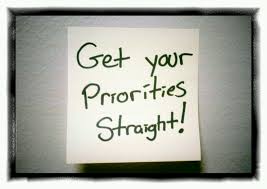There are a number of key meetings that should always be included in an agile development project. Some of these meetings will seem familiar to those of you who know the SCRUM framework. However, SCRUM only covers the part that involves the development team and their progress, it doesn’t really support keeping your stakeholders informed about process, budgets, timetables etc.
The sprint startup meeting
Purpose: Define and describe
Duration: Between 2 hours and a day.
Participants: Everyone in the SCRUM team and the Product Owner.
Results: Every user story is described, understood by all team members and broken down into subtasks of no more than 4 hour to 6 hours.
Every time you start a sprint, you should schedule a sprint startup meeting. This meeting will define, analyze, specify and describe all the work that is to be done in the coming sprint.
Questions from the developers can be answered by the product owner and everyone will know what will be done and how it will be done during the next sprint.
Daily stand up
Purpose: Questions, answers and progress
Duration: No more than 15 to 20 minutes
Participants: Everyone in the SCRUM team.
Results: Every member of the team explains what they are working on and how they are implementing it, so coordination between team members is ensured, and also, team members can ask for help or input of needed. In this way everybody can help each other out and the product owner/project manager will get a great insight in the progress of the development.
Sprint retro meetings
Purpose: Evaluation of the teams cooperation in the last sprint.
Duration: Between 2 hours and 3 hours.
Participants: Everyone in the SCRUM team.
Result: The retro meeting will allow for team members to discuss how the work can be optimized, if some parts of the development process could be optimized etc. Each team member should bring at least one topic they would like to discuss and at the end of the meeting each team member will have two votes, which are placed on each item discussed. The two topics with the highest votes will be in focus in the upcoming sprint.
Sterring committee meetings
Purpose: Communicate to stakeholders
Duration: 1 to 2 hours depending on the project.
Participants: Project manager/Product manager or Owner and steering committee.
Results: Approval of the projects progress and expected budget. Approval of changes to deadlines and milestones. Decision on questions that cannot be made by the project manager or project team.
You can read more about how to report to your steering committee in this article.
 User stories are a great way to describe what a future system or solution should be able to handle, and they are great to span the communication gap between UX-designers (user experience designers) and the developers.
User stories are a great way to describe what a future system or solution should be able to handle, and they are great to span the communication gap between UX-designers (user experience designers) and the developers.





